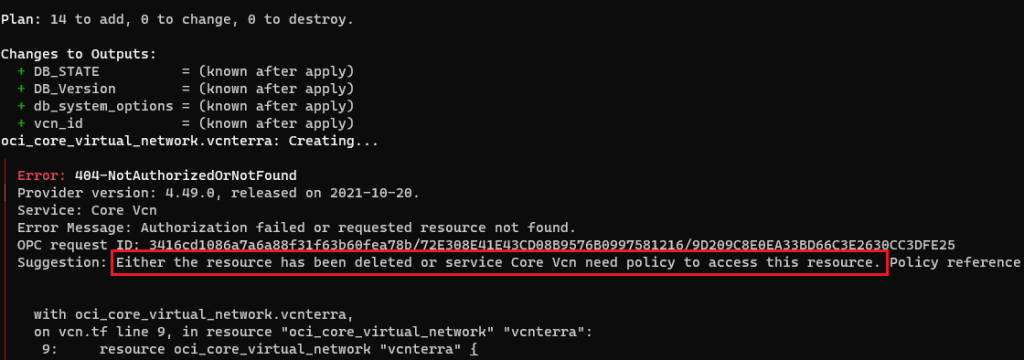OCI FortiGate HA Cluster – Reference Architecture: Code Review and Fixes
Introduction OCI Quick Start repositories on GitHub are collections of Terraform scripts and configurations provided by Oracle. These repositories ... Read More
Découvrez pourquoi Eclipsys a été nommée 2023 Best Workplaces in Technology, Great Place to Work® Canada et Canada's Top 100 SME !
En savoir plus !
Terraform uses API (Application Programming Interface) to interact with your Cloud Provider’s platform. Hence many error messages are thrown by your terraform deploy come directly from the cloud platform (i.e OCI services). In some cases, they prove to be very unhelpful and empty of insights, leaving you to wonder what really is breaking your deployment. These are part of what we call the API Errors. In my case, I spent weeks pulling my hair off to find what was really behind my API 404 Error.
Therefore, I decided to summarize what was documented and what really happened.
First, as It’s always better to lay down the basics, I would like to give a brief preview of the API errors structure for OCI.
Service error messages returned by the OCI Terraform provider include the following information:
For example, as shown in the official OCI documentation, the output is very similar to common REST API errors
Error: <http_code>-<api_error_code>
Provider version: <provider_version>, released on <release_date>. This provider is <n> updates behind to current.
Service: <service>
Error Message: <error_message>
OPC request ID: exampleuniqueID
Suggestion: <next_steps>
This list is not exhaustive and includes only the error message and suggestion
Error: 400-LimitExceeded
Error Message: Fulfilling this request exceeds the Oracle-defined limit for this
tenancy for this resource type.
Suggestion: Request a service limit increase for this resource <service>
Error: 500-InternalError
Error Message: Internal error occurred
Suggestion: Please contact support for help with service <service>
Terraform core workflow
Let’s review terraform core workflow and its actions for the sake of completeness.
Workflow commands:
init Prepare your working directory for other commands
validate Check whether the configuration (modules, attribute names, and value types) is valid
plan Show changes required by the current configuration
apply Create or update infrastructure
destroy Destroy previously-created infrastructure
Now the thing is, although init loads the cloud provider plugin, none of the first three commands will verify the API credentials for you. I bluntly assumed otherwise, which was clumsy but it’s never been very explicit in the doc.
Bottom line:
terraform apply is the only step where API credentials are checked, but that’s not all…
What I see

As you can see, the suggestion was nowhere close to helping me out with this conundrum.
My configuration ought to deploy a DB system stack & all previous commands (init, validate, plan) were successful.
What OCI API Errors Page says
I found this note: “ Verify the user account is part of a group with the appropriate permissions to perform the actions in the plan you are executing“
However, I could still create resources in the console with the same user without any permission issue.
After struggling with it for several days, I then decided to put it on ice for a few weeks.
The Real Root Cause
2 weeks later, I accidentally found where all this mess came from, and the problem was right under my nose this whole time. I just decided to check my terraform.tfvars and each of OCI authentication variables one by one.
That’s where I noticed that my credentials were mixed up between 2 tenancies
# Oracle Cloud Infrastructure Authentication tenancy_ocid = "ocid1.tenancy.oc1.." # TENANCY 1 user_ocid = "ocid1.user.oc1.." # USER FROM TENANCY 2 fingerprint = "1c:" # TENANCY 1 private_key_path = "~/oci_api_key.pem" # TENANCY 1 public_key_path = "~/oci_api_key_public.pem" # TENANCY 1 compartment_ocid = "ocid1.compartment.oc1." # COMPARTMENT 2
Thanks for reading
Introduction OCI Quick Start repositories on GitHub are collections of Terraform scripts and configurations provided by Oracle. These repositories ... Read More
Introduction So far, I have used Oracle AutoUpgrade, many times in 3 different OS’. Yet the more you think you’ve seen it all and reached the ... Read More